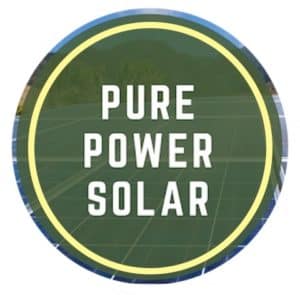Note to reader: This product is no longer available. However, BougeRV has a similar solar panel to the 180W one I reviewed. It’s a 200W monocrystalline panel that you can find below:
BougeRV 180W 12V Monocrystalline Solar Panel (5BB)
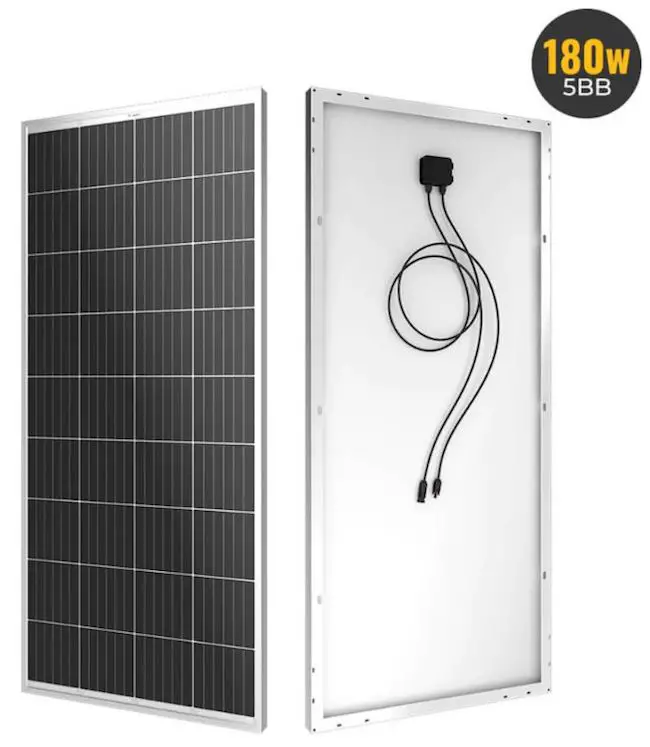
With so many rigid solar panels available on the market today, the ideal one for you may be hard to find. After testing the BougeRV 180W solar panel myself, I found that it has several qualities that make it a competitor in the industry.
The BougeRV 180W solar panel has high output capabilities. It’s heavy but made with high-quality materials. Its long warranty period also allows for a cushion of security – especially in rampant weather. I can easily see myself using this panel on my roof year-round.
| Pros | Cons |
|---|---|
| High-quality materials (aluminum frame, high efficiency, etc.) | Materials used make it a heavy product (24 pounds) |
| High power output after testing in summer sunlight | Long (58 inches); might be hard to mount |
| Relatively inexpensive for the value it offers | Amp rating too high for some portable power stations |
Now you have some insights into this panel’s capabilities, but what purposes is this panel best for?
With mounting and draining holes, the BougeRV rigid solar panel is specifically meant for mounting on rooftops: homes, RVs, sheds, etc. It’s inexpensive for its power output and quality, so creating an array with multiple panels may be a valuable option.
However, if you’re like me, you want all of the details before considering this option. Below are my results. After that, I’ll discuss the specifics of my testing.
My results
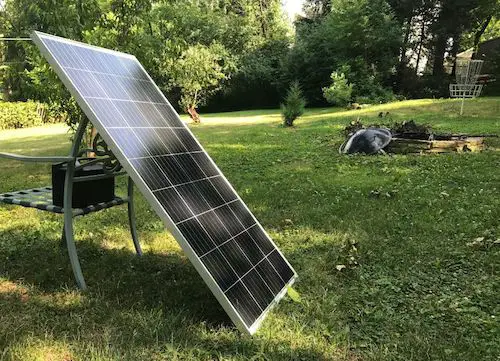
- Maximum power output recorded: 128-133W (using my EcoFlow River Max power station)
- Time of day max output was recorded: 9 AM
- Weather: Humid and clear skies in the middle of summer
- Location: Midwest United States
- Note: The 133W was achieved after pouring water on the panel. The max output without adding water was 128-129W.
The output of this panel is excellent considering the conditions I tested it in. The air was dense and humid, which usually hurt the solar panel’s performance.
In addition, I ended my testing a bit too early at 9 AM and didn’t experience peak sunlight while using the panel.
I’ll get into peak sunlight later and give you an estimate of its full potential if I test it later in the day.
But first, I’ll give you the specifications.
Specs – BougeRV 180W panel (5BB version)
| Peak power Pm (W) | 180±5% |
| Open circuit voltage Voc (V) | 21.6±5% |
| Max power voltage Vmp (V) | 18±5% |
| Max power current Imp (A) | 10±5% |
| Short circuit current Isc (A) | 11±5% |
| Solar cell efficiency | 21%±0.5% |
| Max system voltage (V) | 1000V DC |
| Cell type | Monocrystalline |
| Dimensions | 26.38 x 58.27 x 0.38 in |
| Weight | 24 lbs |
| Warranty | 25-year transferable power output warranty 5-year material and workmanship warranty |
| Source | User manual |
I’d like to mention that solar panel voltage increases when it’s colder outside. The “max power voltage (Vmp)” and “max power current (Imp)” are rated at 77°F (25°C).
These are standard testing conditions, but colder conditions cause the panel to increase its voltage, therefore increasing its overall output.
By using an MPPT charge controller with your solar generator system (as opposed to a PWM), you can capture this excess voltage to pump out a higher wattage to your batteries and charge them faster.
To show that these specifications are legitimate, I’m going to show you how I performed my tests with this panel.
My testing equipment used
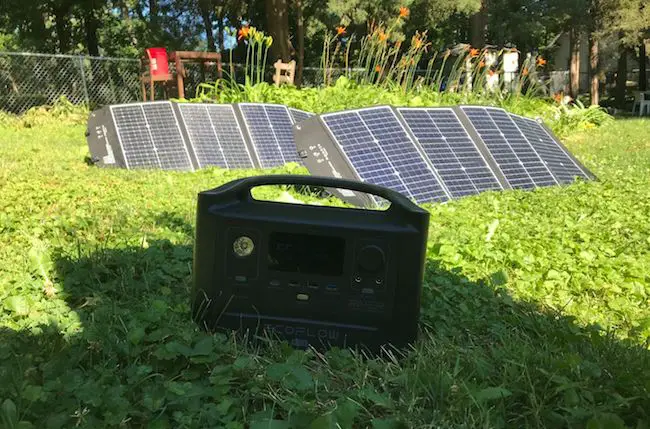
I used the following additional equipment in my testing:
- Jackery Explorer 1000 portable power station
- EcoFlow River Max portable power station
- 2x Elecaenta 120W portable solar panels
- Multiple adapter cables to connect the panels to the power stations
The purpose of using two solar generators was to see if one of them inputted more power than the other in the same conditions.
I used the two Elecaenta 120W panels to see if they could outperform the BougeRV panel or give me other insights on how the power stations interacted with the panels.
The Jackery Explorer 1000 has a 163W maximum solar input. For beginners in solar, volts x amps = watts. This is important because the max amps the Jackery 1000 can handle is 7.5A (source: manual).
This 7.5A cannot receive the full output from the BougeRV panel in ideal conditions because the panel outputs around 10A in good sunlight.
However, by using my EcoFlow River Max, I could harness the full output of this panel because the solar generator is capable of a 200W max solar input with a 12A Max.
You’ll see how this computes into wattage performance later on. Before that, however, I want to show you my testing conditions.
I know this can seem quite tedious, but several variables affect the capabilities of a solar panel.
Variables in my testing
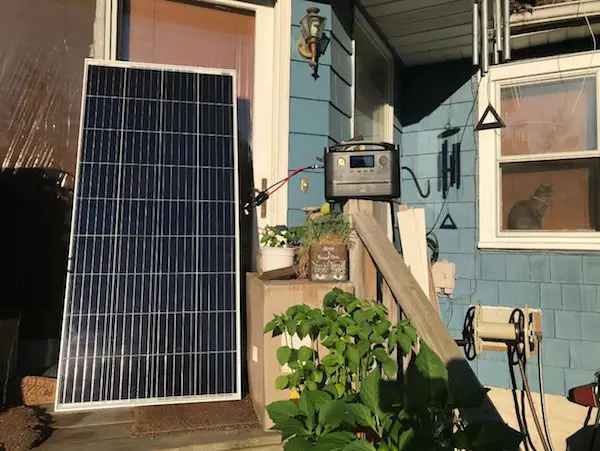
The following are the variables that I worked with:
1. Humidity fluctuation in my morning testing (6:45-9:00 on 7/12/22)
- About 3°F increase (6:45 vs 9:00)
- About 10.5% decrease in humidity (6:45 vs 9:00)
- 64.5% (6:45 AM) vs 53.6% (9 AM)
- Humidity can cause decreased solar panel performance (10-20%)
2. Change in the angle of sunlight & peak sun power
According to several Google results, the best time of day for direct solar charging is from 10 AM to 2 PM. This is because the rays are more direct and void of any obstructions.
My last test was at 9 AM, which may have had a significant impact on the performance of the panel compared to the 6:45 test.
With the sun moving in the sky throughout the day, the angle of the solar panel needed to be adjusted to be perpendicular to the sun. This allows the panel to capture the most sunlight possible.
3. Variation in battery charge status
This can affect the allowable input from the solar generator’s MPPT charge controller. In short, charge controllers read the battery and charge it at different power levels depending on its battery charge status.
For example, a battery charged to 80% capacity or higher may cause the charge controller to decrease the power coming from the panel. This is to safely charge the battery and protect its longevity.
- I reduced the EcoFlow River Max from 71-75% capacity to 59% between 7:30-8:30 AM.
- At my 6:45 AM test, the EcoFlow River’s battery was at 71% capacity and was pulling in 92W.
- At my 9 AM test, my River battery was at 64% battery capacity and was pulling in 128W (w/o me adding water to the panel).
- Based on this data, I’m not entirely sure if my solar generator’s battery capacity affected the maximum allowable power from the solar panel.
4. Additional factors
These are some other small changes that I made to try and get the most out of the solar panel:
- Raised the panel about one inch
- I used two tree branches to hold the panel up. The panel was lying in tall grass which was possibly blocking some sunlight from reaching the panel.
- Different cables & adapters
- Cable length and the use of adapters can affect the incoming power from the solar panel.
- I was using two different cables to connect the panel to my portable power station:
- MC4 to XT60 (about 3ft long)
- MC4-to-Anderson w/ Anderson to XT60 adapter (about 1ft long)
- The smaller cable seemed to improve the efficiency by 1-2 watts
- Cleaning the solar panel
- I did this once or twice throughout my test using just water and a small towel.
- Pouring water on the solar panel at 9 AM
- At 9 AM, I poured water on the panel using a gardening bucket. This increased the panel’s output by 4-5W and helped me achieve a 133W maximum output from the panel.
Overall, testing the BougeRV panel with the EcoFlow River Max resulted in about a 28% improvement in solar panel wattage (9 AM test versus 6:45 AM test).
Taking into account these steady increases in power, I created a table below displaying the actual wattage (from my testing) and the potential output wattage (if I stayed out longer).
Actual + estimated output
Assuming that peak sunlight is at noon, I’ve included my actual output results from 6:45-9:00 AM and then incorporated the estimated wattages from 9:30 AM-12 PM into my analysis.
I factored the following into my estimations:
- Peak sunlight: Where the sun is highest in the sky and emits the highest amount of harnessable power (around noon).
- Decrease in humidity: Less humidity equals better solar panel performance. The humidity decreased by over 20% from 6:45 AM to 12 PM.
- Temperature: Temperatures above standard testing conditions (25ºC) can decrease overall solar performance.
| Time | Temp. (ºF) | Humidity (%) | Solar Panel Wattage |
|---|---|---|---|
| 6:45 AM | 71.6 | 64.54 | 92W (actual) |
| 7:05 AM (switched location for better angle) | 71.6 | 64.54 | 104W (actual) |
| 7:15 AM | 73.4 | 56.95 | 109W (actual) |
| 7:35 AM | 73.4 | 56.95 | 114W (actual) |
| 8:35 AM (battery discharged to 59%) | 75.2 | 57.2 | 123W (actual) |
| 9:00 AM | 75.2 | 53.62 | 128W (actual) |
| 9:30 AM | 77 | 50.52 | 133W (Estimated) |
| 10 AM | 78.8 | 47.61 | 138W (Estimated) |
| 10:30 AM | 80.6 | 44.89 | 143W (Estimated) |
| 11 AM | 80.6 | 42.06 | 148W (Estimated) |
| 11:30 AM | 80.6 | 44.89 | 153W (Estimated) |
| 12 PM | 82.4 | 42.34 | 158W (Estimated) |
| Totals | +10.8ºF | -22.2% | +66W |
Taking the highest wattage into account, we can calculate its efficiency: 158/180= 87.7% output efficiency. This is a high output efficiency – typically, an 80% efficiency rating is considered good in ideal sunlight (this is not the same rating as solar panel cell efficiency).
My take on the BougeRV 180W solar panel
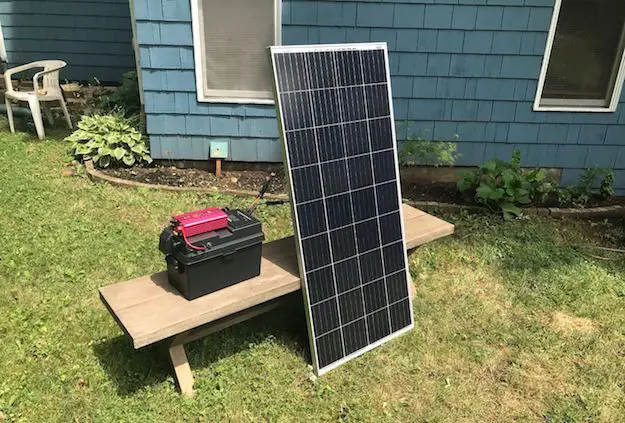
Overall, this solar panel was a success from my tests and estimations. The biggest factors affecting its performance were:
- The time of day
- Humidity
After gathering some data to estimate its full potential, the BougeRV panel has a high output threshold and can be an effective off-grid tool year-round.
Its $200 price tag is competitive in the industry, especially when considering its performance and quality.
Lastly, here are the highlighted features of this panel:
- Mounting holes for rooftop installation on a home, shed, RV, etc.
- Draining holes
- Warranty:
- 25-year transferable power output warranty
- 5-year material and workmanship warranty
- IP65-rated junction box (high water resistance)
- 3 ft 13 AWG cables w/ MC4 connectors
- Corrosion-resistant aluminum frame
If you intend to get a heavy-duty mountable solar panel, I recommend the BougeRV 180W panel. After factoring in its performance, materials, warranty, and price, I consider it an excellent value.
You can also watch my performance tests done on this panel via my YouTube video below.
Once again, the panel I have is on the left but is unavailable, and the one on the right (200W) is the closest BougeRV panel to the one I reviewed:
BougeRV 180W 12V Monocrystalline Solar Panel (5BB)

